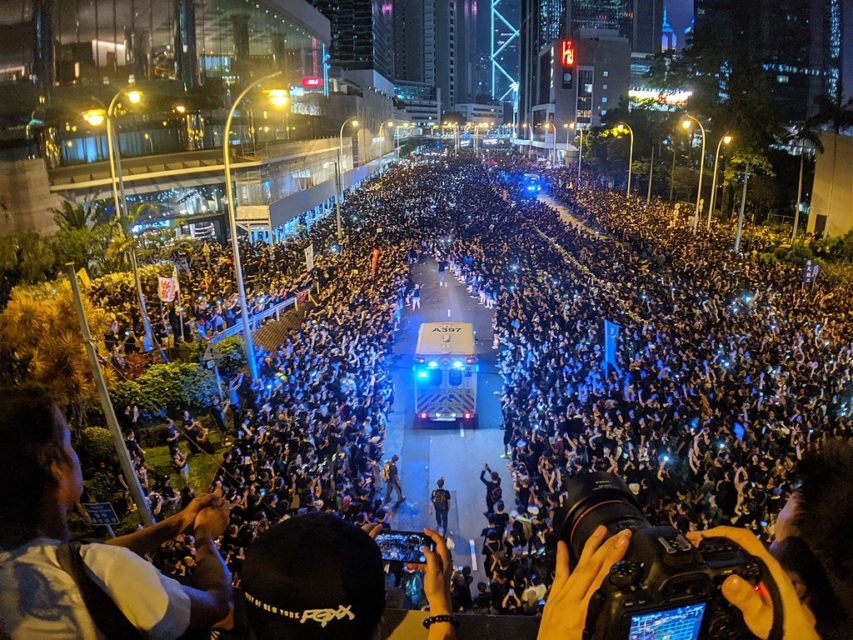Extra Credits
Published on 17 Jun 2019Download the World of Tanks game for free https://tanks.ly/2WjU75T and use the invite code
EXTRATANKS1to claim your starter packJoin the Patreon community! http://bit.ly/EMPatreon
Last we saw Ōkuninushi, he showed kindness to a hare in distress, and the hare of Inaba had foretold that he would be the one that the princess of Yakami would desire. And this was true, because when his 80 brothers showed up at court and declared their intentions, the princess insisted she would only marry him — so thus, his brothers began trying to kill him off…
June 18, 2019
Ōkuninushi’s Tale – Japanese Myth – Extra Mythology
Blitzkrieg on Speed – Nazis on Crystal Meth Part 2 – WW2 SPECIAL
World War Two
Published on 17 Jun 2019While many armies use performance enhancing drugs during WW2, the Wehrmacht takes it to extremes in 1940, with more than debatable consequences.
Join us on Patreon: https://www.patreon.com/TimeGhostHistory
Or join The TimeGhost Army directly at: https://timeghost.tvJoin our Discord Server: https://discord.gg/D6D2aYN.
Between 2 Wars: https://www.youtube.com/playlist?list…
Source list: http://bit.ly/WW2sourcesHosted by: Indy Neidell
Written by: Astrid Deinhard, Joram Appel and Spartacus Olsson
Produced and Directed by: Spartacus Olsson and Astrid Deinhard
Executive Producers: Bodo Rittenauer, Astrid Deinhard, Indy Neidell, Spartacus Olsson
Creative Producer: Joram Appel
Post Production Director: Wieke Kapteijns
Research by: Joram Appel and Astrid Deinhard
Edited by: Spartacus Olsson
Sound Engineering: Joakim BrodénColorisations by Spartacus Olsson
Archive by Reuters/Screenocean http://www.screenocean.com
A TimeGhost chronological documentary produced by OnLion Entertainment GmbH.
From the comments:
World War Two
1 hour ago
Read before you comment; “it wasn’t just the Germans” This video treats the use of methamphetamine by the German Wehrmacht and its cultural background. The purpose of this video is not to attribute any atrocities that the Nazis perpetrated to that they were simply on drugs – we know that this was not a contributing factor to what they did, although it perhaps influenced how they did it. It is also not the purpose of this video to single out Germany as the only belligerent to use drugs in WW2. As we point out in the video, many belligerents (to not say all) used drugs, especially amphetamines during WW2. In fact amphetamines are still in official, monitored used by for instance the US Army in some situations to this day. However, the Wehrmacht and a few of the Axis allies used methamphetamine which is different than amphetamine as the effects of meth is unpredictable and comes on faster and harder. These unpredictable effects include hallucinations and delusions, which amphetamines do not induce, or at least to a lesser and more predictable degree. Methamphetamine metabolizes into amphetamine in the body, but in that process it creates a number of side effects that contribute to its unstable effects. Of course this was poorly understood in 1940 and meth was also available commercially over the counter in many places like the US and Australia, mostly as a dieting pill and (somewhat ironically) an anti-depressant. While amphetamines like Benzedrine are still administered by doctors for certain conditions, methamphetamine is now known to be a very dangerous, potentially lethal, drug that only has recreational use, and in 2019 it is therefore illegal almost everywhere in the world. Last but not least, the Wehrmacht was singular in how liberal they were in distributing drugs to the troops, at least to begin with. It is important to also point out that beside the official use of drugs, many soldiers throughout the ages have resorted to intoxicating themselves to deal with the unfathomable horrors of war, and in this respect WW2 was no different. We will cover drug use by other belligerents and in general during the war in future videos.
Hong Kong protests
Colby Cosh tests Betteridge’s Law by asking if the protests in Hong Kong are the birth pangs of a new nation (commonsense and a slight knowledge of Chinese history militate against answering “yes”):

2019 Hong Kong anti-extradition law protest on 16 June, captured by Studio Incendo from Flickr.
Photo via Wikimedia Commons
For the past week, Hong Kong has been taking another step toward figuring out exactly what it is. In an unprecedented display of resistance to Chinese power, literally innumerable hordes have been taking to the streets of HK, protesting the Communist Party-anointed chief executive and her effort to introduce a law allowing for the extradition of citizens to the mainland.
To anyone who follows Hong Kong affairs, these protests seem different qualitatively from those of the past. Earlier, related demonstrations like the Umbrella Movement of 2014 could be dismissed as economic unrest acted out by the young and irresponsible — by people who had not yet entered into, or who feared being excluded from, the strange social bargain between mainland power and HK’s wealth. 2019’s mass action is new: now everyone is marching. The revolt against the extradition bill is led by students, but persons of all ages — in some cases, multiple generations of the same family — are taking to the streets. Business owners are displaying sympathy with the marchers by means of small gestures. Commuters, who would normally be as annoyed with chaos and delay as any Torontonian trying to manoeuvre around a human rights demo, are signalling solidarity. The Hong Kong legal profession, aware that unrestricted extradition would annihilate their distinct system and the freedoms China promised to preserve, staged its own silent protest march. Hongkongers abroad are joining in symbolically.
Is this the birth of a nation? Those who wanted to push Hong Kong in the direction of formal independence have always been politely outnumbered. But the challenging, explosive assertion that “Hong Kong is not China” has become a routine feature of Hong Kong life.
Hong Kong was relinquished to China in 1997 after Britain secured paper guarantees that its independent judiciary and Commonwealth-style legal procedures would survive at least until 2047. When the handover was executed, the number 2047 meant — to the British trying to extract themselves from their last imperial briar patch — “far enough in the future for mainland China to have liberalized a bit.” The advent of Xi Jinping has since shown that progress, alas, does not proceed in a predictable linear way.
What Happened to the Giant Hovercraft SR-N4? – The Concorde of the Seas
Curious Droid
Published on 8 Sep 2017They were once known as the “Concorde of the Seas”: mighty flying boats that ferried their passengers with speed and style. Hovercraft was a symbol of national innovation and represented the future of transport in the 20th Century.
And yet, like the Concorde, the huge iconic “Mountbatten-class” hovercraft that once traversed the 22-mile English Channel from England to France carrying hundreds or passengers and cars are no longer with us.
So what happened to the giant hovercraft SN-R4?
Patreon : https://www.patreon.com/curiousdroid
Paypal.me : https://www.paypal.me/curiousdroidSponsors: Symon Hamer, Florian Hesse, Georgi Dobrev, Douglas Gustafson, Marcus Chiado, Mitchell Payce, Skalgrin, Jorn Karlsen, John Roscoe.
This episode’s shirt was the Trip Paisley Surf Retro by Madcap England and is available from http://www.atomretro.com/madcap_england
Get 10% discount with the code DROID10Presented By Paul Shillito
Written & Researched by Andy Munzer
Additional Material by Paul Shillito
Images and Footage : retepbleck, MAD Hovercraft, http://www.hovercraft-museum.org, Griffon Hoverwork, kentishmanvideo
Music by Mike Mullen, http://www.positrosmic.com
QotD: The birth of Jesus and the open concept house
Jesus was not born in a stable. That’s not to say the birth wasn’t attended by farm animals — the Gospel of Luke tells us twice the baby’s first bed was a feeding trough — but rather that the animals lived in the house.
Peasant homes in first century Bethlehem were designed with what we would today call an “open concept.” They typically had one large room with the nicer living space in an open loft or on the roof, while the main floor area was where the family’s animals would be brought for safekeeping at night. The guestroom that was unavailable to Jesus, Mary, and Joseph was that loft or roof space, and the big room where they stayed instead served as the kitchen, living room, dining room, and farmyard all at once. The defining feature of Jesus’ birthplace was not isolation, as we often tend to think, but an utter lack of privacy: Mary delivered in a crowded farmhouse with few, if any, interior walls.
And that was perfectly normal, if not exactly desirable, for our modern fixation on the open floor plan is a historical anomaly. It flies in the face of literally millennia of consensus that more rooms is better, and it is a dreadful mistake. The last 70 years of open concept construction and remodeling has left us with dysfunctional houses, homes that are less conducive to hospitality, less energy efficient, and more given to mess.
Bonnie Kristian, “Open concept homes are for peasants”, The Week, 2019-05-12.






